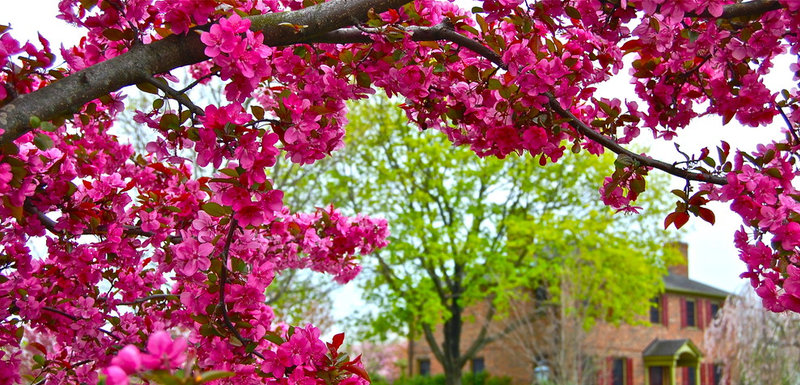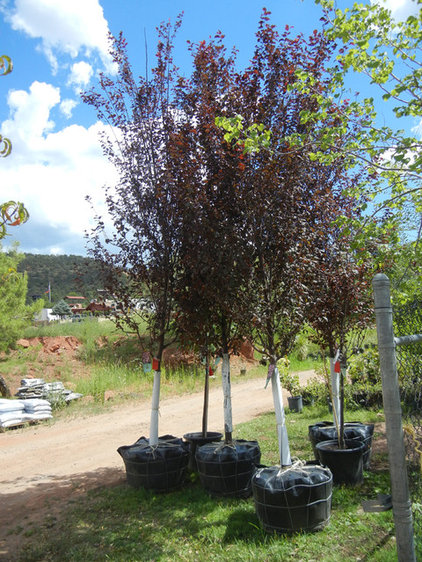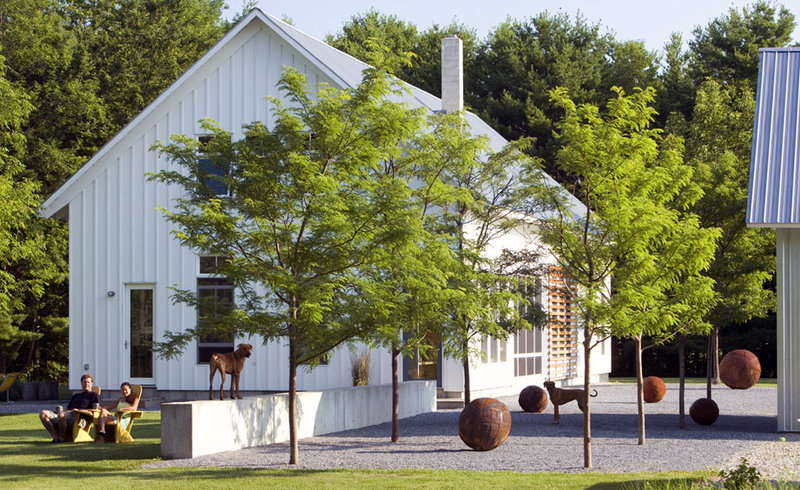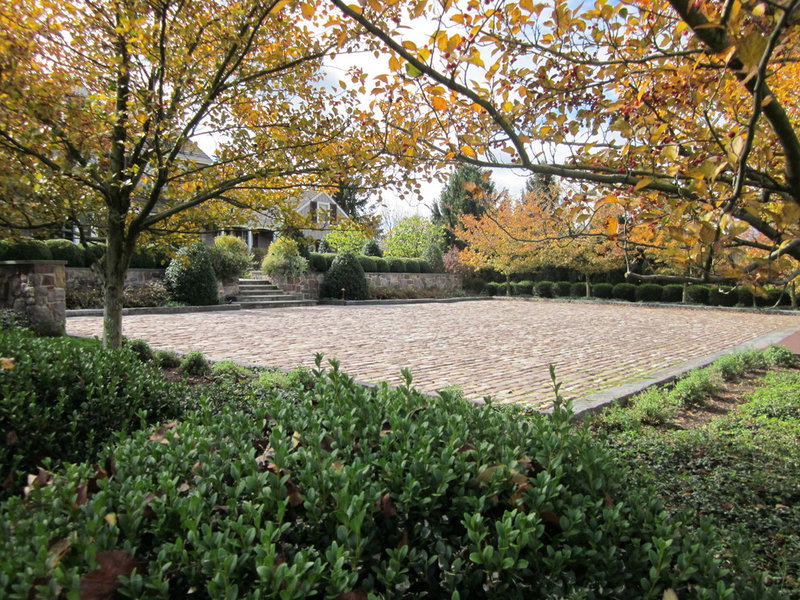History of the Sunflower
Like corn and dry beans, the sunflower (Helianthus annuus) is native to North America, and was first domesticated by Native Americans in Arizona and New Mexico around 3000 bc. They cultivated the sunflower for its seeds, which they pounded into meal for cakes, mush, and bread; the oil from the seeds was rubbed onto their skin and hair. Spanish explorers first encountered these strikingly beautiful plants early in the sixteenth century on their forays northward into what was to become the American Southwest. By 1550, sunflowers had been brought back to Spain and Mediterranean Europe for use as an ornamental flower, and the culture then spread eastward to Egypt, India, and Russia. In 1716, the English patented a process for squeezing oil from sunflower seeds. The Russians, however, deserve credit for turning sunflowers into a food crop.
Russian Influence
Olive oil was the natural choice for cooking in Southern Europe because the olive tree was so well suited to the warm, arid climate of the Mediterranean basin. But Russia was not blessed with the same climate, which meant that it had to import oil from the south. When Russians discovered that copious amounts of oil could be pressed from sunflower seeds, the crop took the country by storm. By the eighteenth century, sunflowers were being extensively cultivated in Russia as an oilseed crop. Peter the Great was a great champion of sunflowers, and the Russian Orthodox Church forbade the consumption of all oils except sunflower during Lent. There is historic evidence of commercial oil production in Russia as early as 1769. Russian farmers and plant breeders should be given credit for selecting and improving sunflowers and turning them into a field crop. Yields and standability increased at the same time as a sunflower oil industry developed. By the nineteenth century, Russia had become a major exporter of sunflower oil to Europe; two million acres of sunflowers were being grown there at the time. Some of the sunflower varieties that we grow in our gardens today, like Mammoth Russian and Black Giant, were actually developed centuries ago north of the Black Sea in Russia. These varieties were rather noteworthy at the time because of their almost two-foot-diameter seed heads.
Interest in cultivating sunflowers began to grow here in North America during the 1880s. Progressive plantsmen and other forward-thinking individuals of the era turned to Russia for improved varieties of the very sunflowers that had originated here hundreds of years earlier. Missouri seems to have been one of the first areas in the United States to widely adopt the crop. A growers’ association was established in 1926, followed shortly after by the first commercial production of sunflower oil in the country. Sunflower seed was also brought into Canada by Russian immigrants who settled on the prairies. A sunflower-breeding program was initiated by the Canadian government in 1930; the plant breeding material came from Russian Mennonite immigrants. Canada’s first sunflower-seed-oil-crushing plant came online in 1946. Due to its popularity north of the border and the ideal climate of the high plains, sunflower acreage soon spread southward into the wheat country of northwestern Minnesota and North Dakota. This area has remained the epicenter of sunflower culture since World War II.
The Rise of the Hybrid Sunflowers
Sunflowers remained a relatively minor crop throughout the 1950s and 1960s because demand for the oil was not great and efficient harvesting machinery had not yet been developed. Acreage continued to increase slowly in the Canadian prairie provinces, and the Canadian government licensed the Russian variety Peredovik for widespread planting in 1964. The most amazing thing about sunflower culture in North America during this era was that only open-pollinated nonhybrid varieties were being planted by farmers. Hybrid corn — produced by crossing one corn variety with a mate that had been detasseled — had been the norm since the late 1930s, but this was not the case for sunflowers. This process couldn’t be done with sunflowers because there was no way to turn one plant into a male and another into a female. But this all changed in the 1970s when sunflower breeders were finally able to isolate cytoplasmic male sterile lines to use as the female parent in the hybridization process. The very first sunflower hybrids were released in the mid-’70s. This corresponded with an increased public acceptance of vegetable oils as animal fats declined in popularity. European demand for sunflower oil had also begun to outstrip Russian production, and with new higher-producing sunflower hybrids and an extra-strong demand for oil in Southern Europe, American farmers began to plant more acres of this crop than ever before. The US yearly production finally exceeded five million acres for the first time in the late 1970s. Sunflower production had finally emerged from inconsequence.
Sunflowers have really come into their own since the first hybrids were released in the 1970s. Growing crops that would stand up to blustery fall winds had always been a problem in the early days of sunflower growing, and anyone who has ever grown open-pollinated Mammoth Russian sunflowers in their garden knows how these tall plants with their top-heavy seed heads like to fall over once they begin to ripen. Since hybrid sunflowers are much shorter in stature and have stronger stalks, they will stand well into late fall, which allows for excellent in-field drying and an easier harvest; potential yields have increased to more than a ton to the acre under ideal growing conditions. However, the most important advances that have been made in sunflower breeding have been in the disease- and pest-resistance departments.
Sunflowers have always been a prime target for a host of fungal and bacterial attacks, from white mold to anthracnose. Insects are also a major concern. But modern hybrid varieties have been selected and bred to withstand some of these pressures.
The heart of sunflower culture in the United States is in the northern plains. Sixty percent of the crop is grown in northwestern Minnesota and North Dakota, and all of the advances that have been made in breeding sunflowers have been made in this area as well. The USDA has a sunflower-breeding station in Fargo, North Dakota; North Dakota State University (NDSU) is also quite active in developing new and improved sunflower varieties. A small number of seed companies breed and distribute sunflower seed in the area, most of them located on the Minnesota side of the Red River. Dahlgren of Crookston, Minnesota, is one of the oldest sunflower seed companies and can be credited with many of the early advances in hybridization. Croplan Genetics of Mentor, Minnesota, a division of Land O’Lakes, is a major supplier of seed to the market. Seeds 2000 in Breckenridge, Minnesota, is a newer company that is leading the way with a lineup of certified organic sunflower seed. If you are seriously interested in raising sunflowers, you will have to source seed from this part of the country, but all of these outfits have some untreated conventional seed. Most companies are willing to take your credit card number, box up a bag of seed, and send out to us here in the Northeast by UPS.
Types of Sunflowers
Before you order seed, it might be a good idea to familiarize yourself with all the different options out there in the world of sunflowers. Why do you want to grow sunflowers and what do you plan to do with them once they are harvested? There are two basic types of sunflowers — black oil seed and confectionary. Confectionary sunflower seeds are larger (eight to twelve millimeters) and have a characteristic white stripe running across their outer seed coat. Because they are larger and contain more inner “meat,” these seeds are hulled to make the sunflower seeds we eat as snack food. Confectionary sunflowers contain only 30 to 40 percent oil. For some reason, they seem to grow better out in North Dakota than here; in addition, hulling sunflower seeds is even more specialized and difficult than hulling oats or spelt. The infrastructure and knowledge for hulling confectionary sunflower seeds simply does not exist out east. As far as I know, no one has successfully managed to produce snack food sunflower seeds here in our region. This certainly doesn’t mean that it cannot be done, but it will take more experimentation with varieties and hulling equipment. Black oilseed sunflowers, however, seem to be more reliable and easier to produce here in our region. Their seeds are much smaller in size (4.5 to 8 millimeters) and contain from 46 to 50 percent oil. These are the same all-black seeds that are sold for bird feeding. Black oil sunflowers contain less inner meat and are not recommended for hulling. The production of oil for human consumption and the resulting by-product of oilseed cake for livestock feeding is the primary end use for sunflowers grown here in the northeastern United States.
Until recently, the oil that was pressed from black oil sunflower seeds was linoleic oil. Linoleic sunflower oil has about 69 percent polyunsaturated fat, 20 percent monounsaturated fat, and 11 percent saturated fat. The linoleic component is a good source of omega-6 fatty acids. There are also some traditional sunflower varieties that are considered high oleic. The oil that is pressed from these seeds has at least 80 percent monounsaturated fat and is quite high in omega-9 fatty acids. Because of competition from and lost market share to the olive oil industry, the National Sunflower Association began a breeding program in 1995 to develop a mid-oleic sunflower oil that contained higher levels of omega-3 fatty acids. New sunflower varieties were released onto the market in 1996 with the trademarked name of NuSun. This oil is nutritionally superior and better for you, and hydrogenation is not required to make this oil compatible with commercial frying. It is very stable and resists the oxygenation that produces rancidity. By 2007, 85 percent of the sunflower oil market was dominated by NuSun mid-oleic oil. If you have the opportunity to buy seeds of a NuSun variety, don’t be afraid of the newfangled nomenclature. It is truly superior oil seed that has been developed by traditional plant-breeding methods.
Sunflower Culture
Sunflowers have many cultural similarities to corn. They grow best when planted in well-drained loam soils, and both crops are lovers of sunshine. Corn transforms sunlight, water, and air into starch and carbohydrates; sunflowers photosynthesize these same substances in the presence of sunshine into high-quality oil and protein. Nitrogen is required for the production of protein, and one of the major differences between the two crops is that a corn plant will gobble up an inordinate amount of available nitrogen from the soil environment while sunflowers grow quite well with more moderate nitrogen levels. A soil rich in the humic substances that slowly release smaller amounts of nitrogen is best suited for sunflowers. But too much nitrogen is just as harmful to a sunflower crop as too little. I can speak from personal experience in this department. Several years ago, I fertilized a small sunflower planting with profuse amounts of dairy manure. For a while, I thought I had done the right thing — the growing crop seemed like it was making more progress than neighboring fields that had not been so heavily fertilized. But after the field flowered and began to ripen, stalks began breaking. More and more plants fell over every day, and by harvesttime over half of the sunflowers had fallen to the ground. Sunflowers are a taprooted crop with an uncanny ability to scavenge nitrogen and water from deep within the soil profile, so adequate levels of other essential elements like potassium, magnesium, and phosphorous are just as important as nitrogen to a sunflower crop. Small amounts of a balanced mineral fertilizer and a light coating of compost or aged manure should be all that is necessary. Follow the recommendations of your soil test and limit nitrogen inputs to no more than eighty units to the acre.
Choosing the Right Sunflower Variety
Most of us will be planting hybrid sunflowers, and believe it or not, some of the companies out there are beginning to offer organically grown seed, Seeds 2000 and Blue River Hybrids among them. If you can’t find organic seed, though, try to buy seed that is untreated. When I first began growing sunflowers in 1998, untreated seed was rare. Because sunflowers grown out in the high plains are afflicted with so many diseases, seed treatment with fungicides is standard fare. Thankfully, the organic movement has now grown enough in importance and market share that seed companies are offering untreated seed as a common practice. If you find a variety that works well for you, it might be a good idea to contact your dealer or seed company and reserve untreated seed well in advance of the coming season. These companies clean and process seed all through the winter, and a simple early reservation will ensure that you will have the seed you want the following May when it comes time to plant.
Make sure to choose a variety that fits your growing environment and microclimate. Hybrid sunflowers are usually classified as short, medium, or full season. I usually plant sunflowers that are short to medium season because of my northerly mountainous location. As with any of the crops harvested in October or November, sunflowers are subject to the weather. Cold rain, snow, and wind are of course imminent at harvesttime, and dry-down can be slow or nonexistent when the weather begins to deteriorate. When that two- or three-day window of sunny weather arrives in mid-October, you want your sunflowers to be dry and ready for combining. Not much is worse than having a high-yielding crop out there in the field that is still mushy and not yet ready to harvest when opportunity presents itself. Once again, I can speak from experience on this subject. It’s better to have a moderate harvest safely in the bin than it is to have a great harvest out there being eaten by birds or knocked over by wind and snow. If you are new to growing sunflowers and want to experiment a little before diving in headfirst, I recommend doing your own little variety trial. Obtain small amounts of seed for five or six different hybrid sunflower varieties from several different companies. Plant out everything side by side in a small plot and evaluate the performance of the hybrids on your farm. By autumn, the varieties that shine in your environment will stand out. You will then be able to plant your chosen variety with confidence in the next growing season.
Growing Sunflowers
Sunflowers usually do well after a nitrogen-contributing crop like sod or soybeans. Some professional crop advisers don’t like to see sunflowers planted after soybeans because of the risk of white mold infection. If you saw any white mold (sclerotinia) in the previous year’s soybeans, don’t plant sunflowers in the same field, as sunflowers are very susceptible to this fungus. Work the land into a friable seedbed that is smooth and free of clods before heading to the field to plant. Sunflowers can go into the ground in mid-May just before the danger of spring frost has disappeared. Most are seeded in thirty-inch rows with a conventional corn planter. Field populations are just a bit lower than what would be normal for corn. Whereas thirty-two thousand plants to the acre might be an acceptable population for a crop of corn, twenty-five thousand would be better for sunflowers. This means spacing plants eight to ten inches apart instead of the six inches that’s standard for a corn crop. John Deere plateless planters with finger-pickup seed dispensation are perfectly suited to planting sunflowers without any modification. The only adjustment necessary is to reduce the depth of planting to one and a half inches and to back off the amount of seed planted.
If sunflowers are planted too thick, they won’t thrive. Heads will be small and stalks weak. Traditional plate planters need a bit more modification to plant sunflowers. First, check the tag on the bag to find out what size of sunflower seeds you have purchased. Number two is the largest sunflower seed and number five, the smallest. Once you know the seed size, you can choose the proper plate by looking at a chart on the back of the bag. Medium and large seeds travel through seed plates much more uniformly than the smallest seeds. Sunflower seed plates are quite thin and very specialized. For proper planting, they require an additional filler ring under the main plate to take up extra space. Make sure to position the filler ring under the seed plate and not above it. I made this mistake once. I wondered why there was no seed coming out of the planter, and when I stopped to inspect, I found that I had put everything together in the wrong order. No matter what kind of planter you use, it is best to take it for a dry run on a driveway or another hard-packed surface to make sure that you are laying down the right amount of seed. Count the number of seeds in seventeen and a half feet of row and multiply by a thousand to determine the number of plants to the acre. Last but not least, make sure the soil temperature is at least fifty degrees before beginning to plant sunflowers.
Germination and Early-Season Weed Control
The period between planting and emergence is an ideal time to practice aggressive weed control. Constantly monitor the germination process underground by digging around for sprouted seeds. If you see a big flush of weeds coming, don’t be afraid to pull a spike drag around the field on a sunny dry day to kill weed rootlets in the white hair stage. A tine weeder like a Kovar or Einbock will also do the trick, especially if the sunflower sprout is close to breaking through the ground. Post-emergence tine weeding is a little trickier. Sunflowers sprout in much the same manner as a dry bean or soybean. At emergence, you will first notice two little cotyledons; these are closely followed by the first true leaves. At the same time, the plant is beginning to sink a small taproot. It’s important to wait for the appearance of the first two true leaves before charging through the field with your tine weeder. If you do plan to tine weed your sunflowers, you might want to plant a little heavier than normal because some plants will be yanked out and destroyed during the process. In the past, I have been hesitant to tine weed my sunflowers fearing that I was doing more harm than good, but experience has taught me that it’s better to brutalize the little plants than it is to let the in-row weeds get a foothold. The process is much the same as it would be in corn or soybeans. Pass the weeder as many times as you feel is necessary until the plants get six inches or taller. Timely and effective early-season weed control makes all the difference later in the season by reducing in-row weeds early in the game.
Growth Stages of the Sunflower
Sunflowers have a vegetative and a reproductive stage just like any field crop. The vegetative stage begins right at emergence and continues for six to eight weeks when the terminal bud first appears at the top of the stem. Sunflowers look rather inconsequential right after emergence: Two tiny leaves make their appearance right there at soil level, and from afar it’s difficult to tell the difference between a field of soybeans and one of sunflowers at this very early stage of vegetative growth. Once the roots get a foothold and the leaves begin to widen and elongate, however, it’s much easier to identify the crop as a field of sunflowers. Plants gain stature rapidly through the month of June and into early July, and you might get through your sunflowers with a row-crop cultivator a couple of times before they get too tall for the process. By this time, the leaves have formed a protective canopy over the row that shades out the weeds below. If you can do a reasonably good job of keeping the weeds at bay up to now, there won’t be much competition to worry about after this point. Sunflowers are uniquely characteristic in the coloring and texture of their foliage during this vegetative period. The leaves are a bit furry to the touch and light “lima bean” green in color. Most hybrid sunflowers don’t grow much taller than six or seven feet. Longer-season varieties can have as many as twelve points of leaf attachment and will have a vegetative period that might be one to two weeks longer in duration than a shorter-season variety. Sunflowers are simply amazing in their ability to transform themselves from two tiny leaves hugging the earth to a veritable jungle of large green leaves on sturdy stalks in two short months.
Sometime in early to mid-July, the terminal bud will appear at the top of the stem instead of the next leaf cluster. The reproductive phase has now begun. The terminal bud elongates an inch or so above the nearest leaf and gives us the first hints that it is on its way to becoming a large beautiful flower. After the passage of a few more days, the inflorescence begins to open; the first ray flowers around the outer edge will now be visible. Flowering now begins in earnest in the disc or center of the head. Meanwhile, the sunflower head is getting larger by the day. Now is when you find out how adequate your fertility levels are for growing a crop of sunflowers. If you’re a little short on nitrogen being released from the soil’s humus reserves, it will definitely be reflected in the final size of the seed head. Smaller sunflower heads mean lighter yields.
Sunflower heads are actually composed of two different types of flowers. The yellow petals around the outer circumference are called the ray flowers, and the face of the head is made up of many individual disc flowers that each become a future seed. These tiny disc flowers are self-compatible for pollination and do not need the help of pollinating insects. There is a common myth that sunflowers are heliotropic — which means that the flowering heads of the plants will follow the sun throughout the day as it makes its way from the eastern horizon to the west. This may be true when the plants are quite young and still in the vegetative stage of growth, but it has been my personal experience that sunflower heads usually point to the east. I have had several sunflower fields that were situated on the east side of a north–south road. People passing by were quite disappointed because the sunflowers were all pointed in the direction opposite the highway. The peak period of brilliant sunflower inflorescence is all too short, so be sure to enjoy the sight of your sunflower field when it happens because the plants need to continue ripening to make seed. Get the camera or paintbrushes and easel out when the field is at its most beautiful state, as colors will begin to fade and petals drop off in a week to ten days.
Read more: http://www.motherearthnews.com/print.aspx?id={734B7420-4BF7-44E6-B377-8CBAD51A3598}#ixzz2mXZMqKQk


 Create history through paint
Create history through paint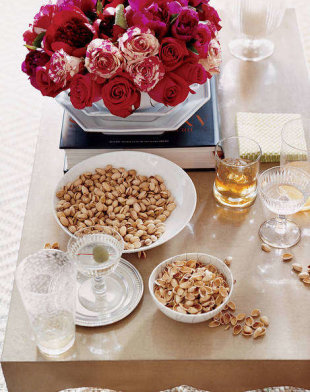 Entertain according to spaceYaggy loves to have people over-for cocktails only-and since she doesn’t have a proper dining room, friends gather round the coffee table. She serves cocktails in cut-glass champagne coupes that were her grandmother’s, plus simple snacks that don’t keep the hostess in the kitchen. For intimate groups, she pulls over the armchairs by the windows (she bought them for their angular shape, had their mahogany frames glazed white, then replaced the ghastly yellow upholstery with an English print). If it’s a big party, the living-room furniture gets pushed to the wall.
Entertain according to spaceYaggy loves to have people over-for cocktails only-and since she doesn’t have a proper dining room, friends gather round the coffee table. She serves cocktails in cut-glass champagne coupes that were her grandmother’s, plus simple snacks that don’t keep the hostess in the kitchen. For intimate groups, she pulls over the armchairs by the windows (she bought them for their angular shape, had their mahogany frames glazed white, then replaced the ghastly yellow upholstery with an English print). If it’s a big party, the living-room furniture gets pushed to the wall. Choose a theatrical color
Choose a theatrical color
